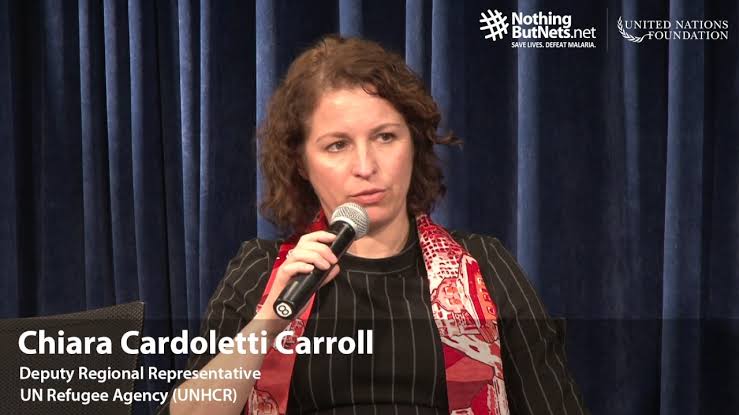Vatican - To bring aid to refugees who are forcibly displaced or fleeing situations of conflict in the horn of Africa is the aim of the joint mission to Sudan of Chiara Cardoletti, Representative to Italy, the Holy See and San Marino for UNHCR - the United Nations Refugee Agency, and Luigi Maria Vignali, the Italian Foreign Ministry Director-General for migration Policy.
The 2 -5 August visit saw the delegation visit the Um Rakuba and Tunaybah fields in the northeastern African country in order “to understand what the needs are at the moment, and see how they can best be met” explained Cardoletti in an interview with Vatican News.
Sudan currently hosts 1.14 million refugees, including 50,000 fleeing the conflict in northern Ethiopia’s Tigray region, which began in November 2020.
The refugees camps
Cardoletti highlights that a lot of work has gone into making the camps into “almost semi-villages” so that people fleeing conflict situations can “live” and maintain their dignity for as long as they cannot return home.

Some of this work includes setting up housing arrangements that are environmentally friendly, providing clean drinking water and other sanitation facilities, among others.
She adds that there has also been a lot of support for the refugees, especially the women and children, as well as dedicated programs to help them overcome some of the difficult experiences they have gone through.
Food security and education
However, the UNHCR representative expresses concern that with dwindling resources, certain needs are becoming more visible.
She highlights there is a concern about food security in the camps. In fact, some refugees told her that food rations had been halved in the past few weeks, further complicating a context where “refugees are practically living in encampment situations and where work is not easily found.”
Another concern is “how to ensure a future and hope for the youths.” She says that the camps have well established elementary schools and learning programs, but notes that more work needs to be done to provide secondary education.
Refugee crisis in the horn of Africa
The East and Horn of Africa and the Great Lakes region is host to about 4.95 million refugees and asylum seekers, as at the end of June 2022, according to the United Nations. Of this number, the majority are from South Sudan (2.35 million) while 12.83 million are internally displaced persons mostly from Sudan, South Sudan, Ethiopia, Somalia and Burundi.
Several factors, including changing climatic conditions, poor rainfall patters and conflict – including in Ethiopia’s Tigray region - have greatly contributed to the human displacement and refugee crisis in this region.
In the face of this, Cardoletti acknowledges the gesture of governments who have opened their doors to welcome refugees and asylum seekers, and highlights the UNHCR’s commitment to provide assistance to these governments in their efforts. She also stresses the need to put in place policies that ensure the protection of women and children who are often more vulnerable in these situations.
Appeal to the international community
Reflecting on the visit, Cardoletti calls on the international community to work towards resolving the conflicts that exacerbate the refugee crisis.
“We are increasingly living a world that is producing more refugees than the world can take care of,” she laments.
She also notes that since the start of the war in Ukraine in February, a lot of resources have been directed towards the Ukrainian emergency, with the effect of creating inadequate funding for a lot of the operations in Africa.
“We cannot forget that we have millions of refugees in Africa,” she says. “And we need to make sure that we continue to support this refugee situation for as long as people are not able to return to their homes.”
-VN